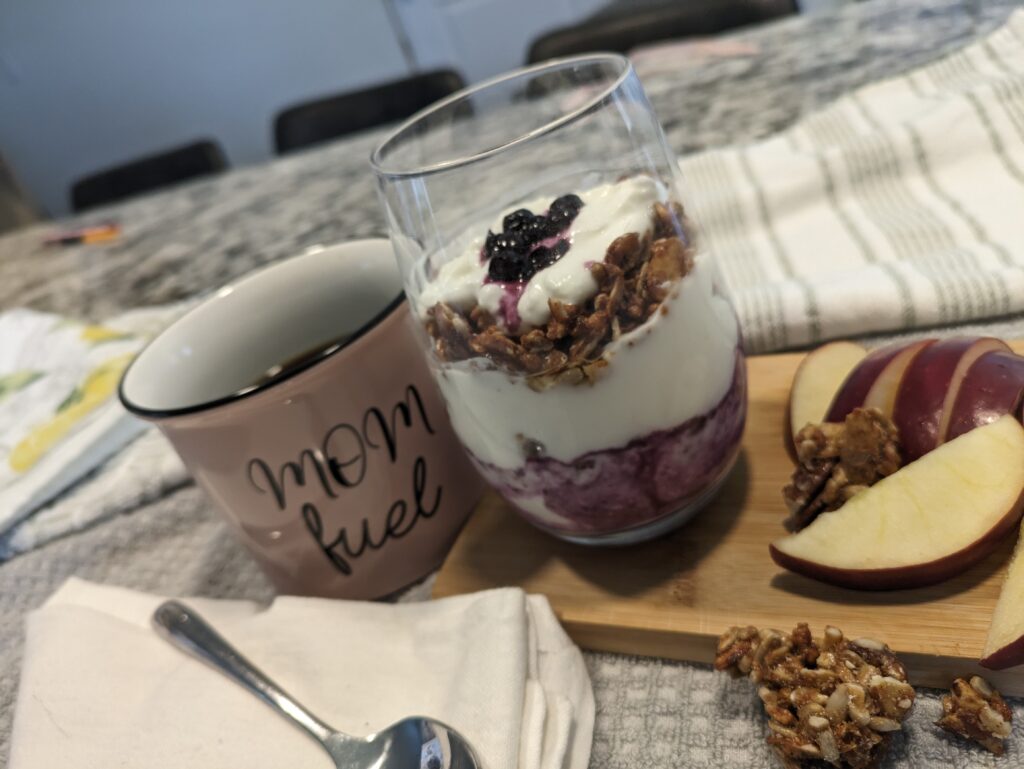And we’re going to do it without a yogurt maker.
By Stephen Simpson
In a recent study, researchers discovered that mice with an abundance of Lactobacillus, one of the most common culturing bacteria found in yogurt, produce fewer stress hormones than mice without it. So, let’s get some more yogurt in our lives — by making it. Don’t worry. It’s not as intimidating as it sounds. And who knows, this recipe could become your go-to breakfast.
If you already have something that can make yogurt, that’s awesome. Use that. If not, no need to run out and buy a machine (although, there are affordable options out there if you want homemade yogurt as a regular part of your life). For this recipe, you’re only going to need a big mason jar, a kitchen thermometer and a bath towel.
Ingredients
•1/2 gallon of milk (skim, 1 percent, 2 percent or whole milk will result in different consistencies, but any fat level of milk will work)
•1 tablespoon of your favorite plain store-bought yogurt with live cultures listed in the ingredients
•Or a yogurt culture (you can buy these online)
Directions
•Heat the milk on the stovetop until it hits 180 degrees. (Do not let the milk boil. There’s a big mess in your future if you do). If there was any bad bacteria present in the milk, waiting to multiply, they’re dead now.
•Take the milk off heat. Cool to 110 degrees.
•Once the milk hits 110 degrees, stir in a tablespoon of your store-bought yogurt or follow the directions on the package of your yogurt culture.
•Pour the milk mixture into your clean mason jar. If it doesn’t fit one jar, split the content into two jars. Screw the lids on tightly.
•Wrap the jar or jars tightly in a bath towel. This will insulate the contents and hold it close to that ideal temperature of 110 degrees.
•Turn your oven on as low as it will go. Let it get to that temperature and shut it off.
•Place your bundled yogurt container into the warm oven. Let it sit in this warm environment for 12 hours. After 12 hours, place the jar or jars into the refrigerator.
•Once completely cooled, open the jar and hopefully the contents are rich, creamy and delicious.
•Mix in honey, granola, fruit and any other of your favorite yogurt toppings and enjoy.
What are those bacteria doing in my yogurt, anyway?
Among other things, they’re chowing down on the lactose found in the milk. Their feast alters the protein structure in the milk, creating the thick, creamy texture. The bacteria are also converting the lactose into lactic acid. That’s why yogurt tastes tangy. That’s also why there’s little to no lactose in yogurt. So, if you’re lactose intolerant, yogurt is likely one of the only dairy products that won’t leave you feeling all bloaty.
What’s Greek yogurt?
Greek yogurt is just yogurt that’s been strained, resulting in a thicker texture. Straining also concentrates the protein content of the yogurt, so you’re eating more protein per serving. It’s easy to make your homemade yogurt into homemade Greek yogurt. Click HERE to view our recipe to find out how.

